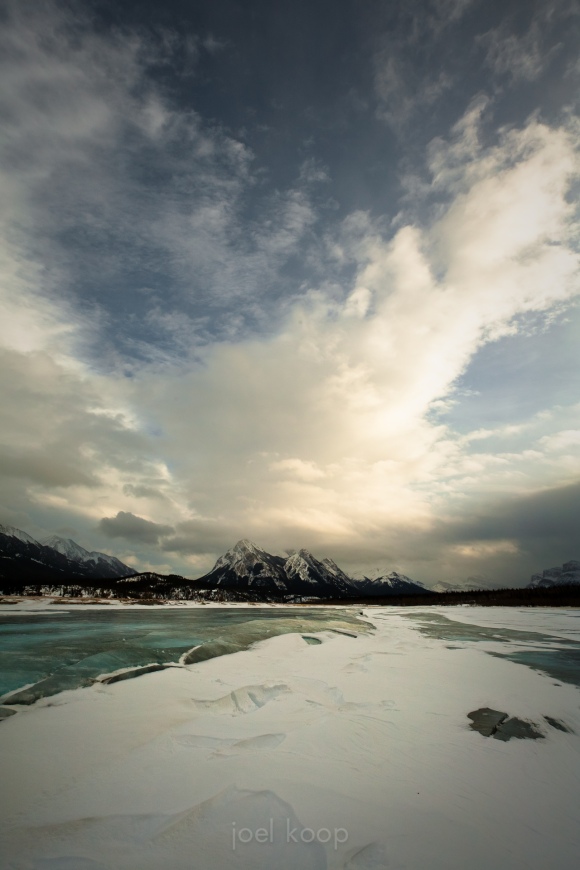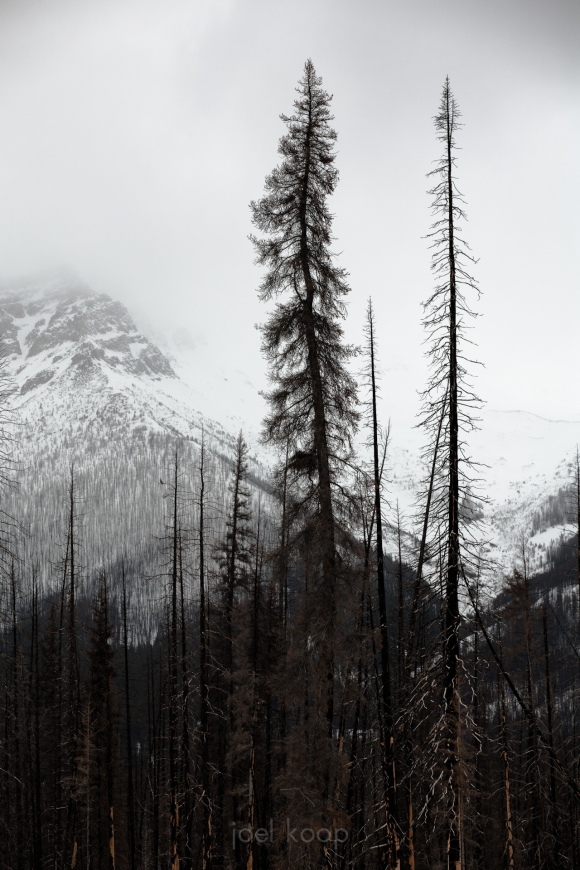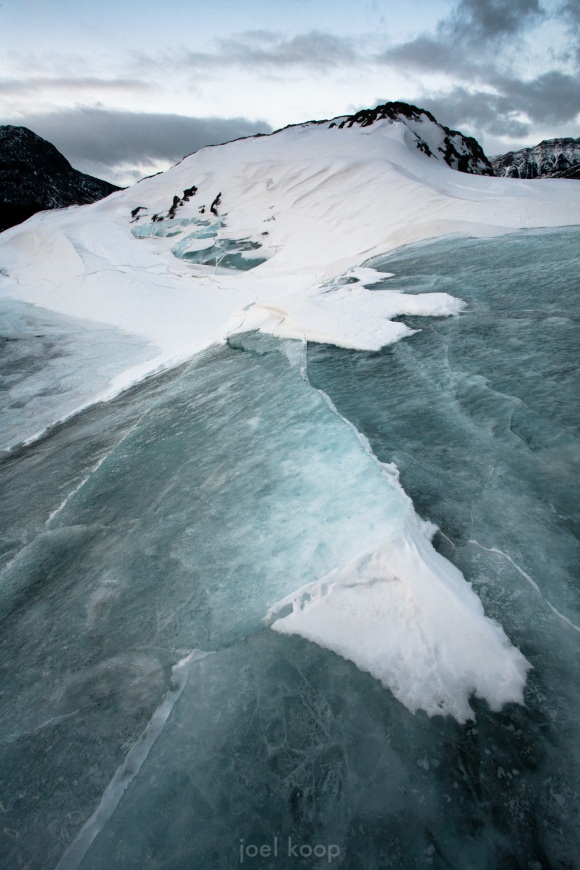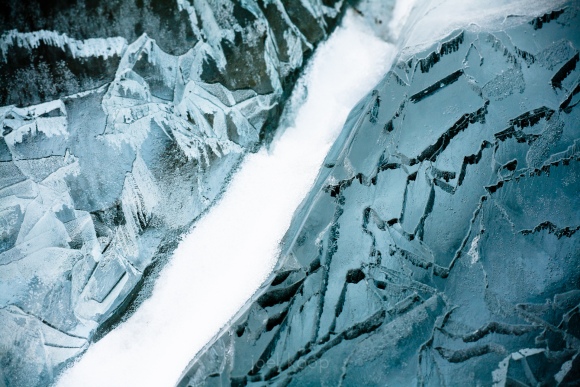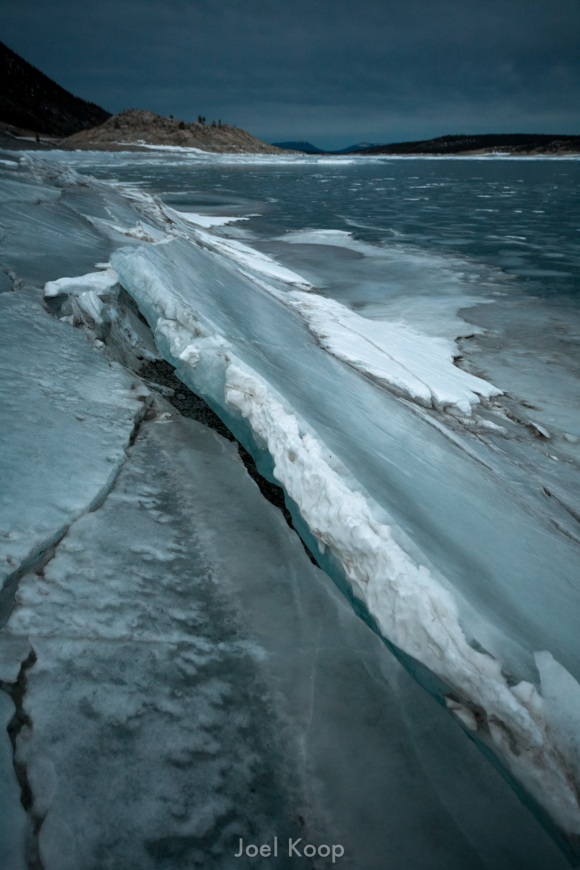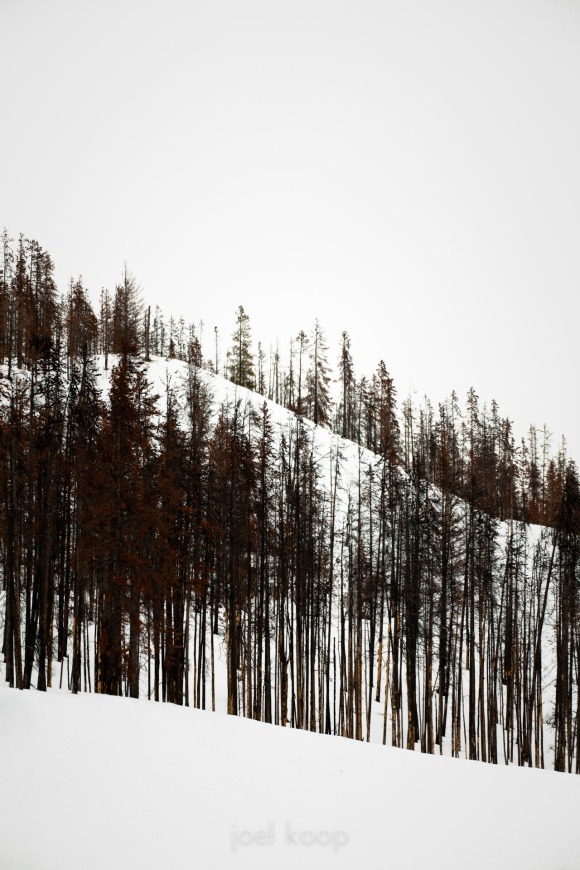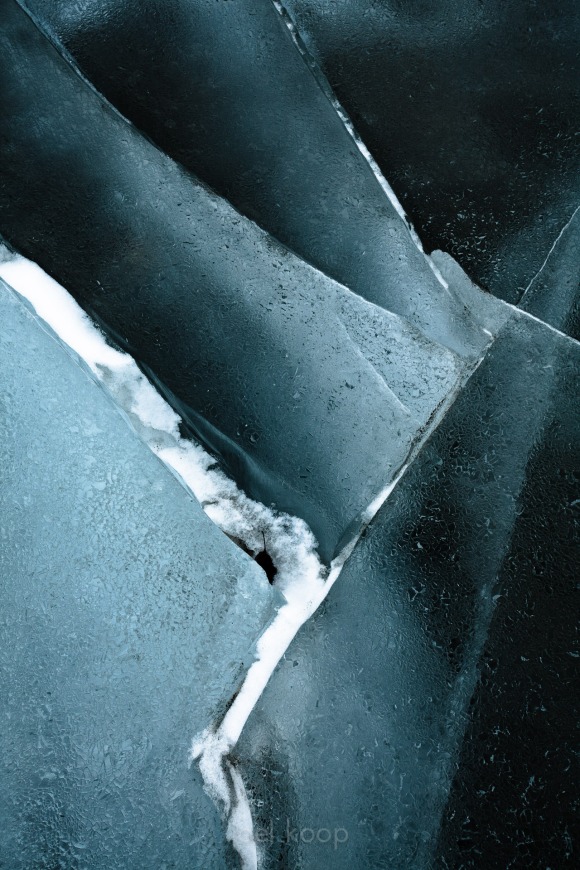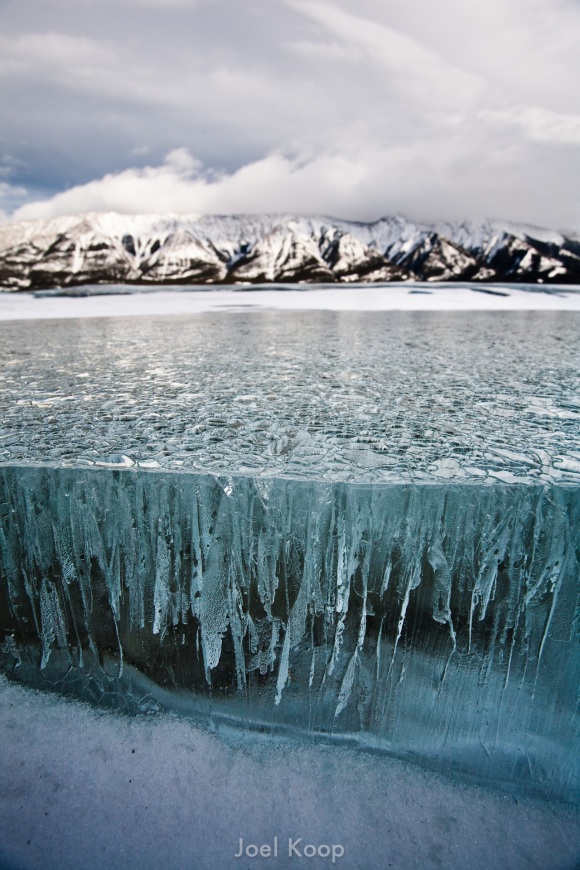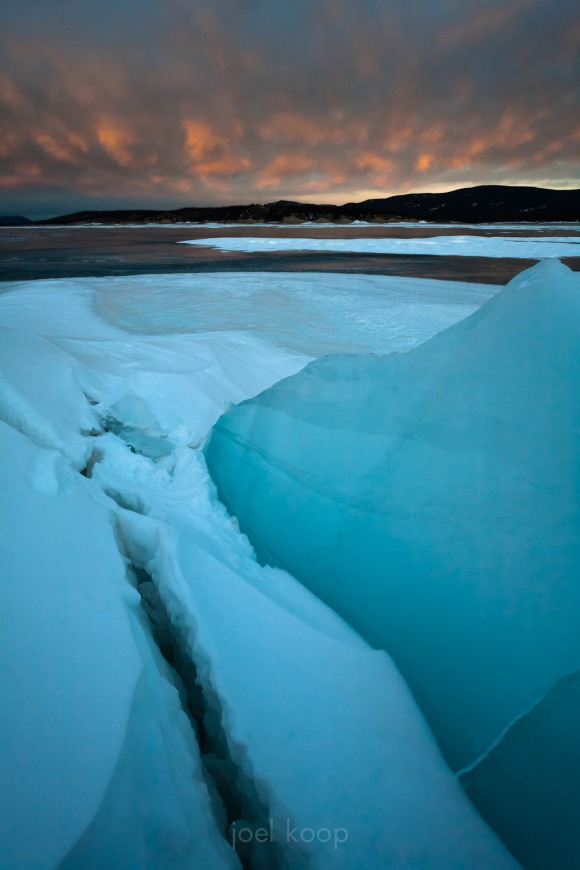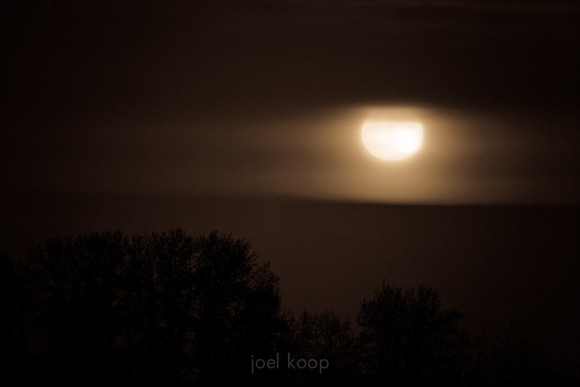On Abraham Lake it’s easy to get sucked into the details—there’s so many fascinating ice patterns, but every once in a while I’d look up and see something like this.
Category: Photo of the Day
Inspiration
There are photographs everywhere—online, in coffee shops, in museums, on billboards. That makes it easy to be aware of what photographers and artists are doing. Artists are often inspiration to each other, and I have definitely experienced this in my interactions with artists in all kinds of mediums. Sometimes the inspiration is conscious and sometimes subconscious, but it happens all the time. I want to acknowledge some of the photographers who have inspired me, and this could be a long list. So I’ll mention them as they come up. I already mentioned Darwin Wiggett a few days ago. This photo was inspired by Jonathan Martin-DeMoor, which I guess means we have a cycle of inspiration going. That is awesome, and often when you get new and interesting work happening—when two artists spur each other on.
Just so it’s clear, I’m not talking about copying. This also happens all the time, and I’m not a fan. This is one thing I was worried about going out to Abraham Lake after seeing photos of it. You actually have to work at avoiding taking the same picture as everyone else. Or maybe you have to take it to get past it, I’m not sure yet. But I am never happy to have the same composition I’ve seen before, even if the light or the weather is different. I’m a creative person, and I want to interact with the landscape myself, not just see it through someone else’s eyes.
Sometimes I want to go to the same places I’ve seen photographed when the area looks interesting, but I’m never interested in duplicating someone else’s work. That is how the landscape spoke to them, not me. I want my photography to share my personality.
The X Composition
Cracked Ice
The ice at Preacher’s Point was full of small cracks – I’m guessing because it was melting – and these caught the light wonderfully. This is a top-down view of similar cracks to the ones you saw in an edge view a few days ago.
Abraham Lake Trip: Sleeping in the Car
I’ve seen plenty of photos of the lake in winter before. The first photos I saw were on Darwin Wiggett’s blog. He takes groups of photographers out on the lake, so it’s starting to be a pretty popular place for photography. And with good reason—the ice patterns are incredible, the snow is either non-existant or drifted due to very strong winds.
About a week before I left, I looked at the forecast and saw positive temperatures. This is crazy for Alberta in January, so I figured I should take advantage of it. I had a few days off in the middle of the week, so I left Tuesday morning, arrived late in the afternoon, and parked beside the lake at the first semi-secluded place I found. I was sheltered from the winds (or so I thought) and had pretty good access to the lake. So I set out down the bank. The last section was steep ice—I would have been stuck without the crampons I’d purchased the day before. I got down to the lake and hiked (gingerly at first) out to a point of land. I was cautious about the thickness of the ice, but it turned out to be frozen several feet down.
The ice at the edge of the lake on the way up to my car.
I had a lovely evening on the lake, and after it got dark, I headed back to the car for night. I’ve set up my car for sleeping quite comfortably. The back seat folds down completely flat, I have my camping mattress on that and even a memory foam topper to add that extra bit of luxury. The temperature that night only went down to -7, which is quite pleasant for winter camping, and I expected to sleep well. I didn’t account for the wind. All night, even sheltered by the wall of rock, the wind was trying to tip over my car. It was like a constant earthquake for 8 hours. I should have just moved, but it’s hard to find another good spot to sleep beside the road after dark. I didn’t sleep much, so I dozed as well as I could, then got up at 6:30 (the sun rises at 8:30), and decided to get some night photos.
This turned out to be impossible. With my rubber footed tripod skittering across the ice, me being blown off balance even with my crampons on, and my camera bag strap humming in the wind, I decided to wait it out till sunrise behind a snowdrift. The wind was a little less here, and I could actually keep my hood up and hear myself think. As the sun started to rise, I ventured out, got a few photos, and then headed back to the car in hopes of finding a more sheltered spot.
One of the few sunrise photos I managed to get:
A further account of this trip and more photos can be found in this post.
In the Pines
Pine trees after a forest fire in the Kootenay Plains Ecological Reserve. I just love the lines of these hills partly hidden behind the trees. It’s not every day I get to use hatching in my nature photography.
Cracked Ice Patterns
Icy Cross Section
Tripods on Ice
Tripods are extremely important for landscape photographers, and I have a couple good tripods that I’ve collected over the years – not my dream tripod yet, but close. I’ve heard of people at the camera store asking for spikes in the feet of their tripods, and always thought it might be a little perk but didn’t really matter. After all, in years of taking photos all over the place, I’ve never really missed having spikes on the feet of my tripods – rubber feet have always worked great.
Well, this week it all changed. Out on the icy surface of Abraham Lake, with the wind blowing constantly and extremely hard, my tripod was useless. In fact, it made everything less steady – it provided more surface area for the wind to catch. The rubber feet had no grip at all on the ice. If I let go of my tripod on the ice, it would start to move away from me as the wind pushed it across the ice. Luckily it never fell over. The best I could do was to hang on to it, put a bunch of my weight on it, and hope no super large gusts came up during the exposure (the gusts were blowing me around a bit too, despite my crampons).
So I now understand the desire for spiked tripod feet, although I’m still not sure how much they would have helped in this case. I think my conclusion is just that it is extremely hard to take long exposures on ice in extremely windy conditions.
I’m not finished going through my photos from Abraham Lake yet, but here’s a preview. This is from Wednesday morning.
On Being Prepared and the Full Moon
I feel a little guilty about today’s photo. First of all, it’s late, but secondly (and more importantly) it caught me by surprise. I should have known that there would be a full moon. I even have a little iphone app that tells me all the moonrise times and locations (as well as sunrise, sunset, and all about stars and constellations—it’s called “Planets”). But perseverance and awareness of my surroundings saved me this time, and just as it was getting too dark to see, a huge orange moon peeked over the horizon. If you’ve ever watched a moon rise, you know it happens very fast.
I got to a clear spot where I could see more moon than tree branches a few minutes after it rose. It was just starting to disappear behind a bank of clouds. I had to set my camera to mirror-lockup (so my camera doesn’t shake) plug in my remote (so I don’t bump the camera when I press the shutter button), and set up the tripod pretty quickly to get this shot. I like the way the clouds diffuse the light, making it a little different than the average clear-sky moon shot.
The full moon as it rose behind a bank of clouds last week.
